Microcement kitchens: the latest in high decoration
The kitchen is, without a doubt, one of the most important rooms in the home. It is a space where we cook and share unforgettable moments with family and friends. Therefore, architects and interior designers have paid special attention to the design and decoration of this space, using modern and avant-garde materials that allow creating unique environments full of personality.
Among the most innovative materials, microcement has managed to stand out for its versatility and for the multiple possibilities it offers in kitchen decoration. This continuous coating material has become the preferred option of many interior design professionals, thanks to its resistance, durability and its easy adaptability to any decorative style.
Microcement kitchens have been the great revolution in the world of interior design in recent years. Their unique finishes and textures, as well as the possibility of customization, have managed to captivate architects, interior designers, and private clients. In addition, their ability to integrate with other materials, such as wood or steel, allows for the creation of warm and elegant environments, where functionality and aesthetics combine perfectly.
But what has really made microcement stand out in kitchens is its ability to adapt to any type of space. Whether in a small kitchen or a large kitchen, microcement adapts perfectly, allowing to create attractive and sophisticated environments, where light and space are maximized. In addition, its easy maintenance and cleaning make it an ideal option for those people looking for a practical and functional space.
With the most modern materials in kitchens, this part of the house has gone from being a simple room to becoming the center of the home. Do you want to fall a little more in love with the microcement kitchens that have transformed the home?
What do microcement kitchens contribute? Know all their advantages
Choosing the coating for a kitchen is a fundamental task, as it not only defines its aesthetics, but also its durability and maintenance. In this sense, microcement kitchens have become an increasingly popular option among architects, interior designers, and homeowners. Why? Here we present some advantages that make microcement an ideal material for kitchen coatings.
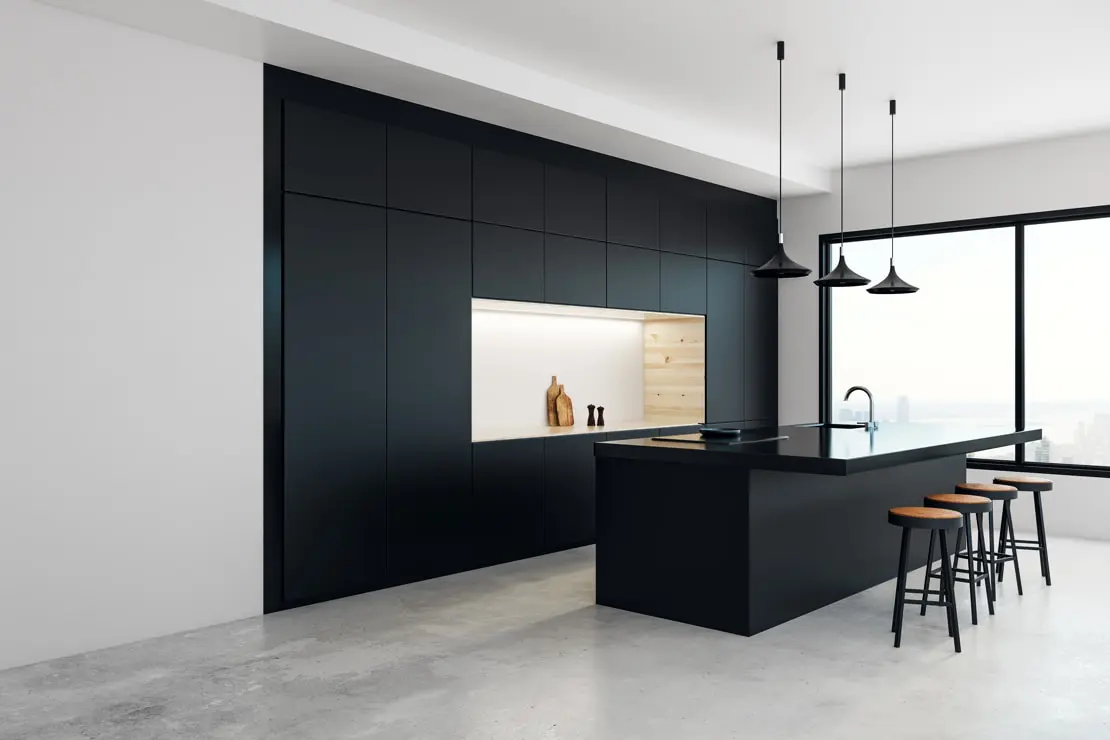
Customizable exclusivity
One of the main advantages of microcement is the possibility of creating unique and spectacular finishes. Thanks to its artisanal application, there are no two microcement applications that are the same, which gives the kitchen a touch of exclusivity and sophistication. In addition, its thin thickness allows it to be applied on any surface, without the need for structural reforms.
Continuous surfaces with amplitude effect
Another advantage of microcement in kitchens is its ability to create larger spaces. Unlike other coatings, microcement does not require expansion joints, which results in a continuous surface that maximizes the feeling of spaciousness. In addition, its easy cleaning and maintenance facilitate the long-term preservation of the kitchen's aesthetics.
Brightness is another of the characteristics that define microcement kitchens. Thanks to its ability to coat floors, walls and furniture, microcement becomes the perfect ingredient to create open and bright spaces. In addition, its wide range of colors allows to customize the kitchen decoration according to the tastes and needs of each owner.
Modern and current aesthetics
Another aspect that makes microcement an attractive option for kitchen cladding is its touch of modernity and avant-garde. Thanks to its ability to adapt to any decorative style, microcement brings a current and sophisticated air to the kitchen. In addition, its application does not require major works, which translates into a saving of time and money.
Waterproof and non-slip surface
Finally, we cannot forget the technical characteristics of microcement. Thanks to its sealing, this material acquires waterproof and non-slip properties, which increases the safety and durability of the kitchen. In addition, its resistance makes it an ideal material to withstand the traffic and daily activity of the kitchen.
Outstanding resistance and durability
Resistance and durability are two of the most outstanding features of microcement in kitchens. This material is capable of withstanding heavy traffic and daily use without losing its original appearance.
Microcement is very resistant to stains, scratches, blows, acids, and cleaning products, which makes it a very durable and easy-to-maintain material.
Easy and simple cleaning
In addition, thanks to its high adhesion, it adheres perfectly to any surface without the need to remove the existing material, which prevents the creation of rubble and the interruption of the kitchen's operation.
Another important factor is that microcement is a jointless material, which prevents the accumulation of dirt and bacteria in the joints. In addition, its waterproof capacity prevents the absorption of moisture and the proliferation of fungi and bacteria.
Microcement kitchens offer a wide variety of aesthetic, technical, and functional advantages that make them an ideal option for cladding any type of kitchen. If you are looking for a resistant, durable, customizable, and sophisticated material, microcement may be the perfect option for you.
At Luxury Concrete, we have a wide range of colors and microcement finishes that adapt to any need and decorative style. Keep reading and discover all the possibilities that microcement offers for your kitchen!
Microcement kitchens: a dream coating for floors and walls
Microcement in the kitchen offers a coating with the greatest versatility on the market. It is perfect for developing immense creativity on floors, walls, ceilings and countertops.
No kitchen space has to be limited to the colors, materials or textures of yesteryear. On the kitchen floor, microcement is ideal for achieving a non-slip surface that is resistant to wear and stains.
According to the decorative style and desired texture, microcement kitchens offer three types of finishes for the floor. If it is an indoor floor, a medium grain microcement is the perfect choice. In this group we find the product Concrete Floor, that offers a natural finish.
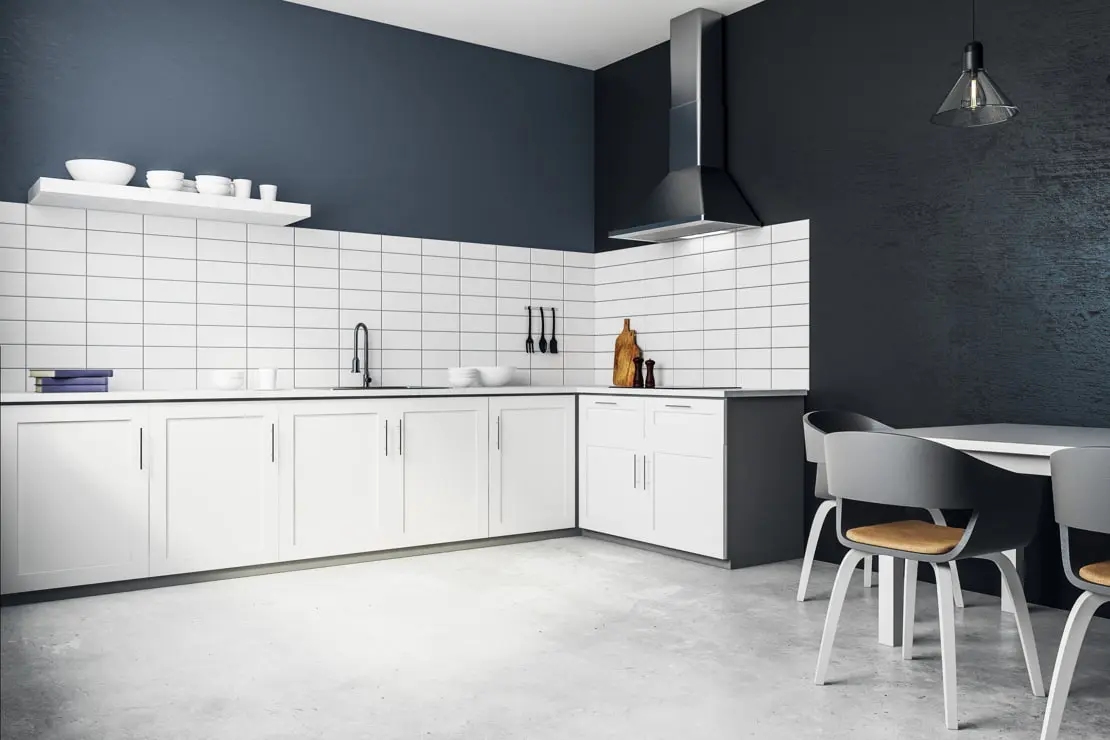
If it is a floor that is subject to intense wear, the best choice is a coarse-grained microcement. Decoratively, this type of product is ideal for giving a rustic touch to the kitchen.
Microcement kitchens with coated walls
The kitchen walls are the best space to make this part of the house breathe and convey the values of high decoration. The microcement cladding on the wall is a perfect combination of luxury and functionality.
On the one hand, it is a material that, thanks to the sealant applied, is resistant to moisture. On the other hand, the microcement on the walls translates into a silky finish that enhances the decorative style of the kitchen.
Fine texture finishes are capable of adapting to any style and enhancing the quality and excellence of the room. With microcement kitchens, it is no longer necessary to limit oneself to the usual materials. Luxury Concrete offers you the latest microcement products to create designer kitchens beyond imagination.
Microcement countertop: the combination of strength and aesthetics
The possibilities of microcement in the kitchen are not limited to floors and walls. Countertops are also a perfect space to achieve a customized coating endowed with maximum resistance.
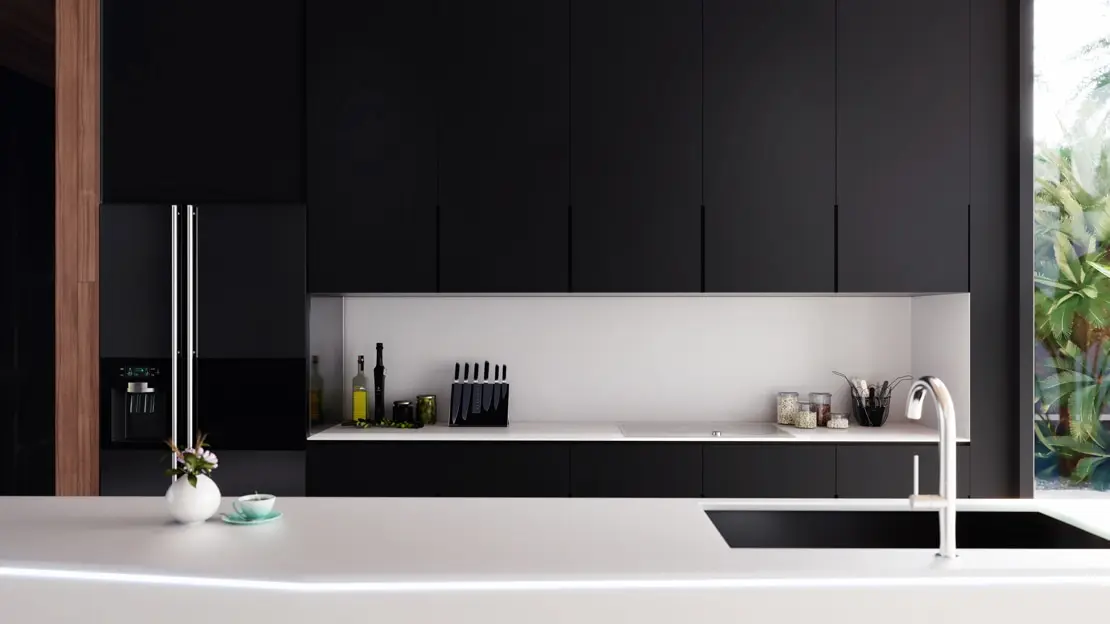
Microcement countertops represent a perfect combination of aesthetics and resistance. They are synonymous with durability, elegance, quality, and functionality to offer an exclusive decorative environment. The absence of joints enhances the hygiene of a space that is permanently in contact with food.
Microcement kitchens in light tones
Opting for light tones in microcement kitchens is a success to give a greater sense of spaciousness and convey freshness. Colors like white, beige or gray never go out of style and, unlike more strident tones, they do not saturate.
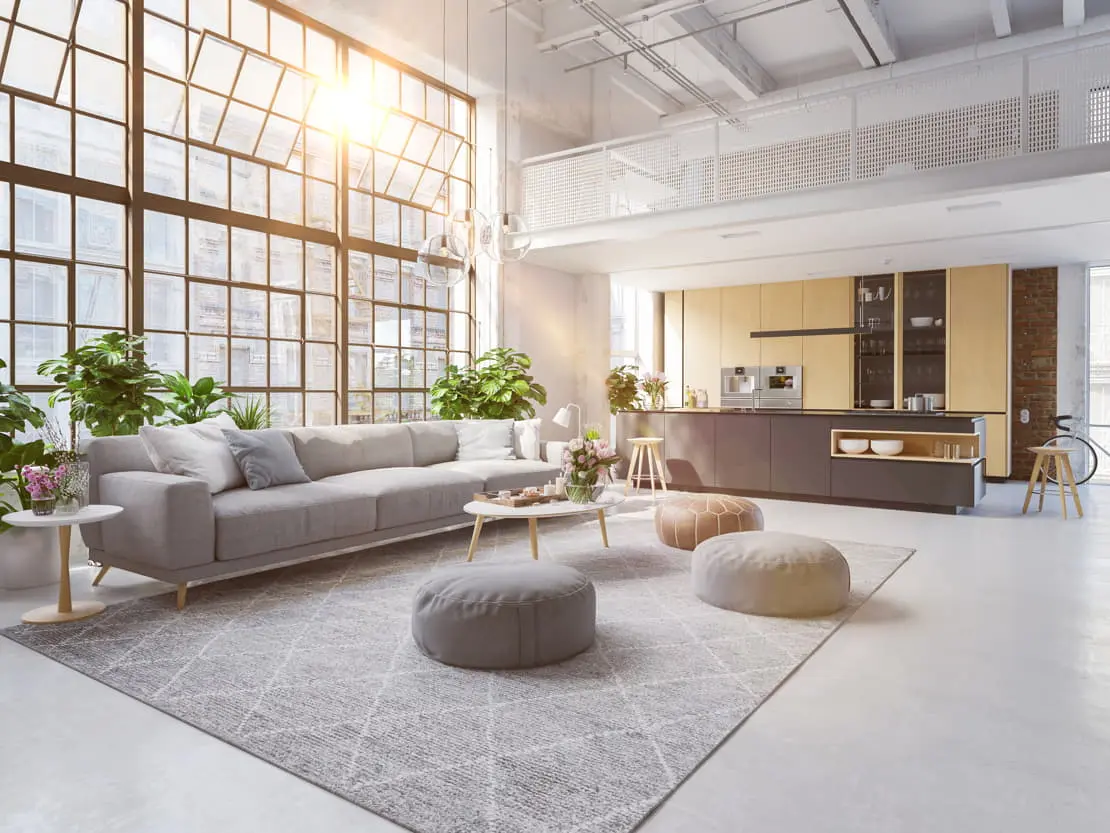
In a kitchen, light tones bring joy, brightness, and vitality in a relaxed way. These types of colors can be easily combined and are perfect for decorating the kitchen with a warm, cozy, and sophisticated atmosphere. Gray is the quintessential color of microcement and is an avant-garde tone that combines very well with all colors.
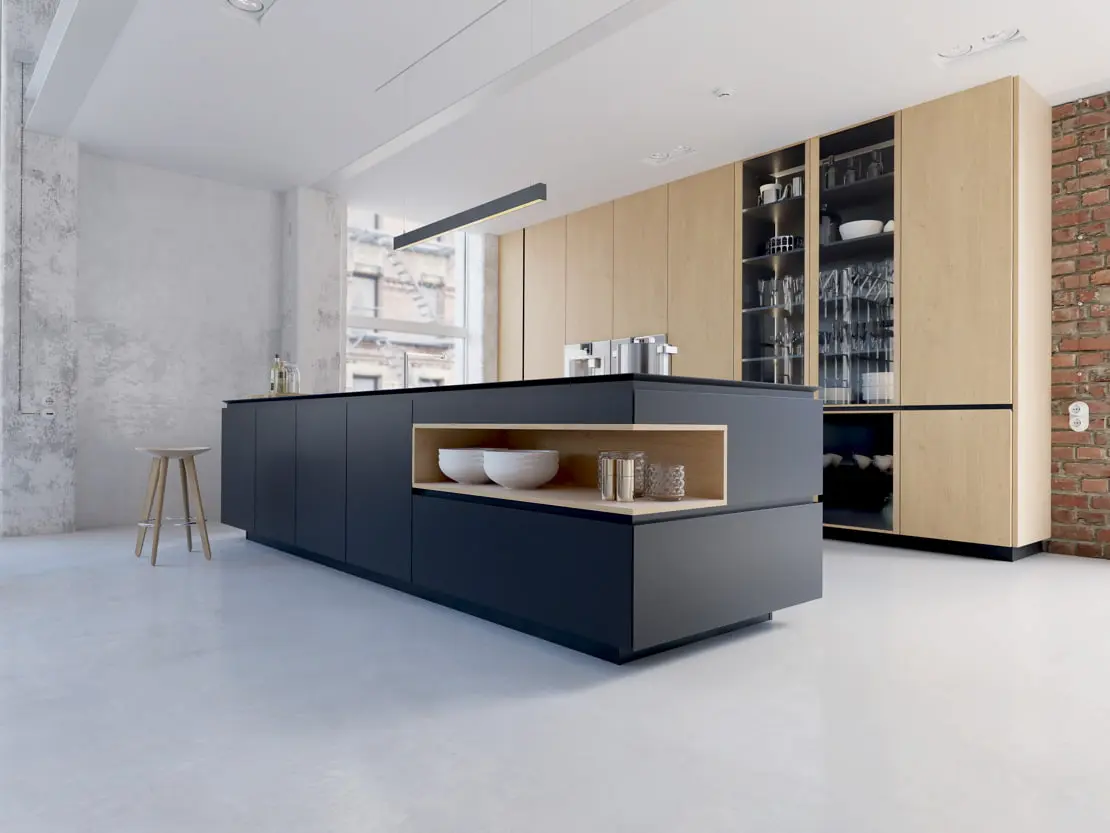
In microcement kitchens, the combination of gray and black is modern and original. In the image above we see how the gray color predominates in the environment and complements perfectly with the black color of the island to generate a wonderful contrast. Once again, wood is present to provide doses of warmth.
Microcement kitchens that mix light and dark tones
The designs of microcement kitchens in dark tones generate a great visual impact, whether in a modern or vintage style. But if this decorative option does not convince us, we can always resort to the maxim that says opposites attract. That is, decorate the kitchen by mixing light and dark tones.
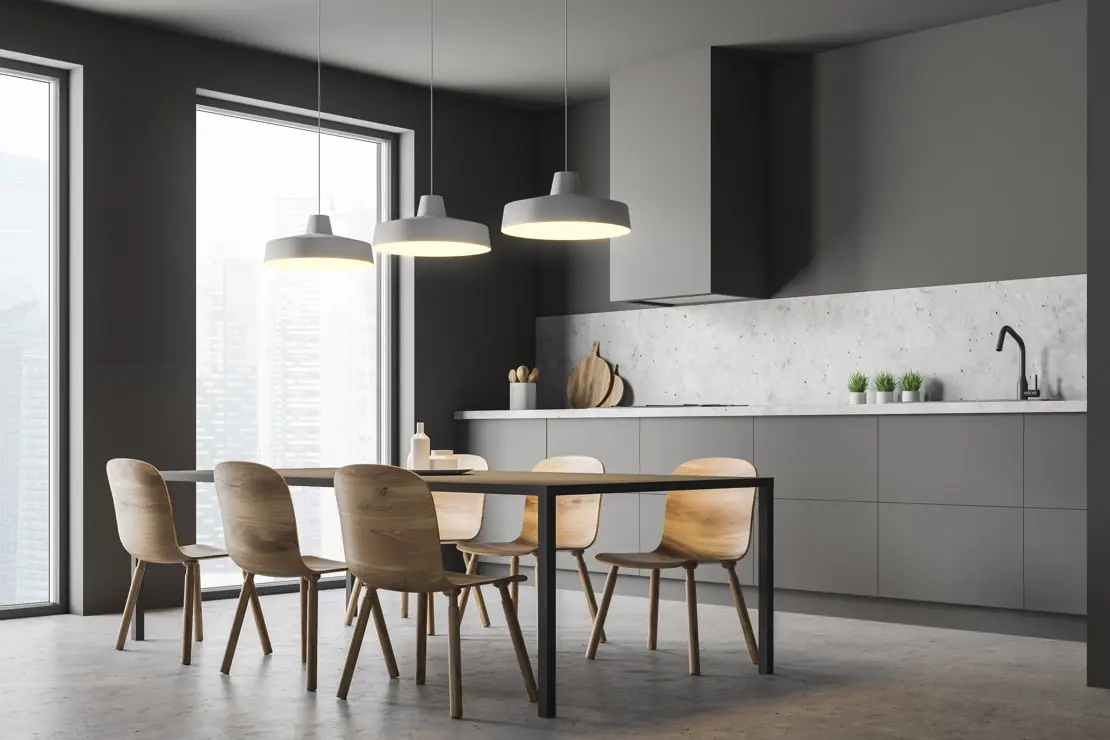
It can be a very good option if we don't want to commit so much to dark colors. It is an intermediate decorative formula that conveys elegance and avant-garde at the same time as brightness and spaciousness. It is a good way to create contrast and enhance the touches of light that the kitchen offers.
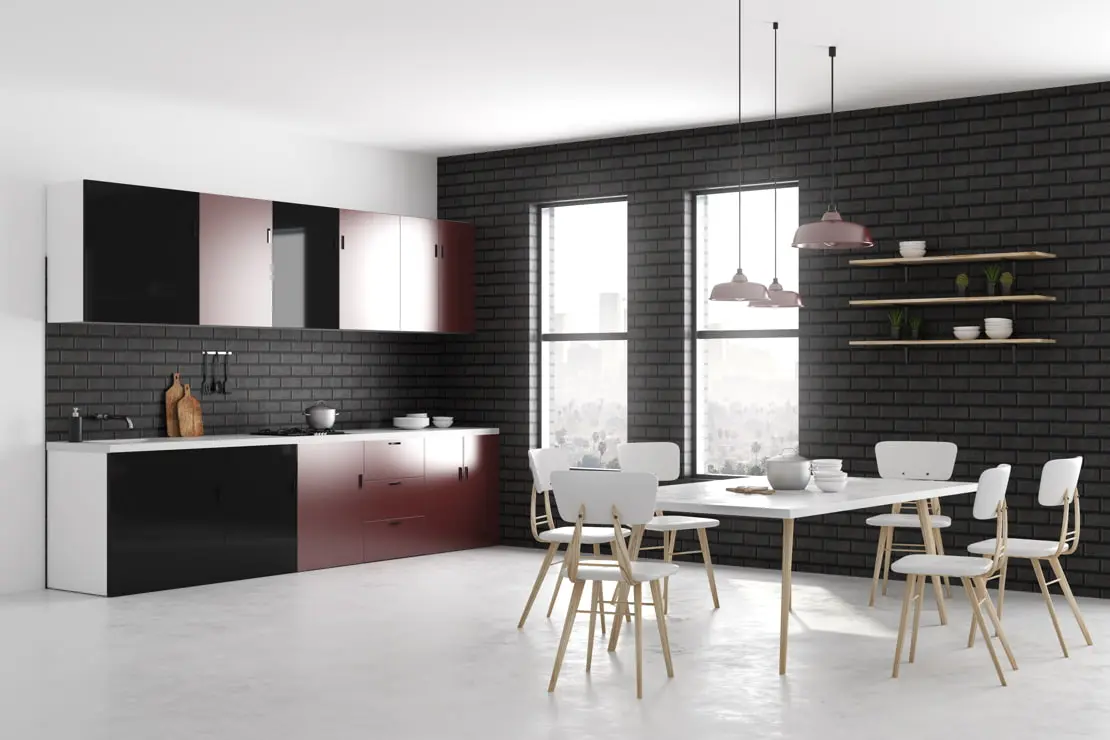
If you are looking for a different microcement kitchen, we offer you an idea. Paint the cabinets in color, leaving the back wall with exposed brick in the purest industrial style and leave the furniture in white. This combination will give an original, modern and very elegant touch.
Customizing, updating and creating a modern space in your kitchen is within reach and, from Luxury Concrete, we want to help you and be your source of inspiration.
Price of microcement in kitchens
Are you thinking about renovating your kitchen and have you considered the option of using microcement? Next, we will tell you everything you need to know about the price of a microcement kitchen, as well as the factors that influence its price.
Microcement is a very versatile and resistant material that is increasingly used in interior and exterior decoration. In the case of kitchens, microcement presents itself as an excellent option for several reasons: it is easy to clean, resistant to moisture and stains, and has a wide range of colors and finishes.
The price of a microcement kitchen depends on several factors. First of all, the size of the kitchen is determinant for the final price. A small kitchen will require less material and labor than a large kitchen, so the cost will be lower.
Another factor that influences the cost is the current state of the kitchen. If the kitchen is in good condition and only needs to apply the microcement on the existing surface, the cost will be lower than if it is necessary to remove the previous coating or level the floor.
The type of finish is also an important factor. There are different types of finishes in microcement, such as matte, satin or glossy, and each of them has a different price. In addition, some finishes may require a greater number of layers, which will increase the cost.
Finally, the final price will depend on the professional you choose to carry out the work. It is important to choose a professional with experience in the application of microcement to guarantee an optimal result. While there may be differences in price between one professional and another, it is important not to skimp on expenses to guarantee the quality of the work.
In summary, the cost of a microcement kitchen will depend on the size of the kitchen, its current condition, the type of finish, and the professional chosen to carry out the work. In any case, it is an investment that is worth it, as microcement is a durable and easy-to-maintain material that will bring a modern and sophisticated look to your kitchen.